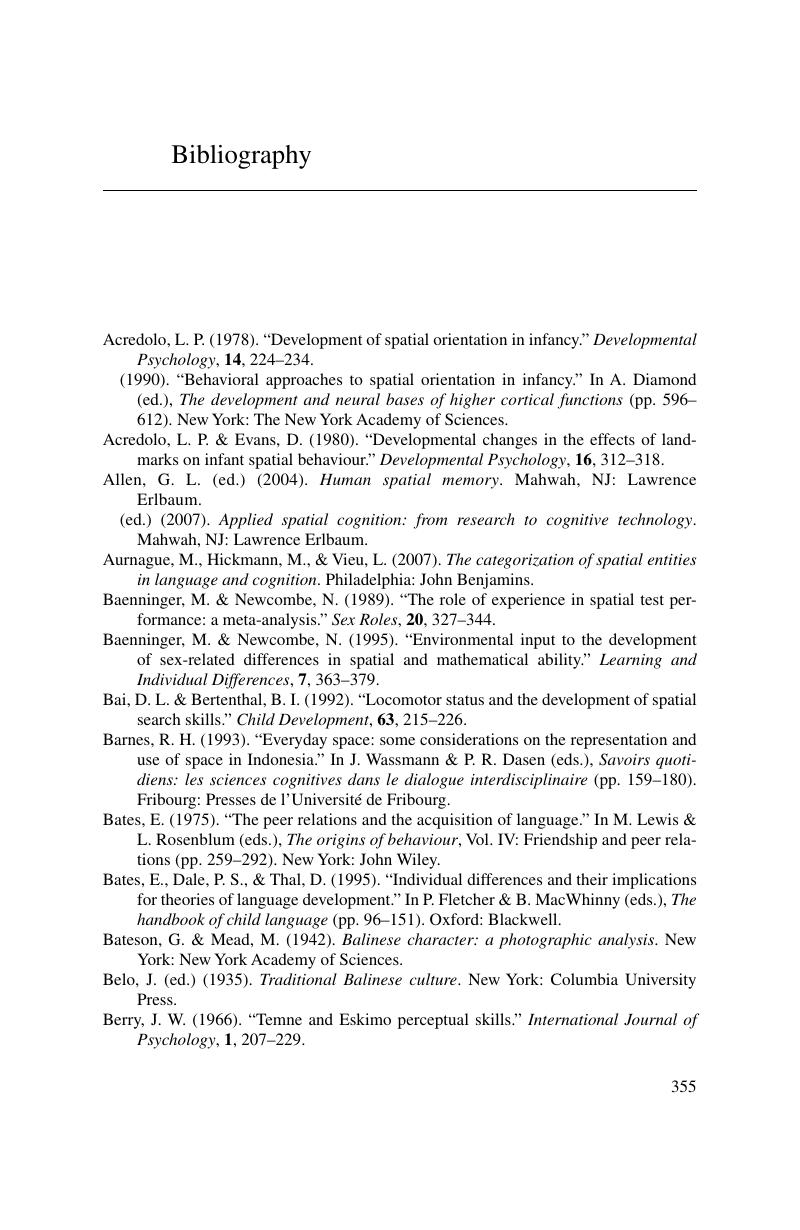Bibliography
Published online by Cambridge University Press: 02 December 2010
Summary

- Type
- Chapter
- Information
- Development of Geocentric Spatial Language and CognitionAn Eco-cultural Perspective, pp. 355 - 375Publisher: Cambridge University PressPrint publication year: 2010

